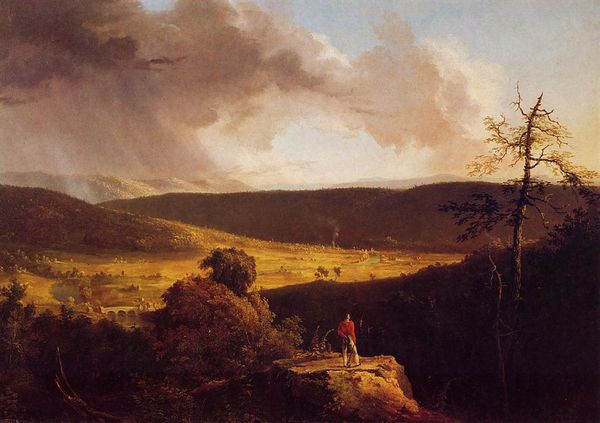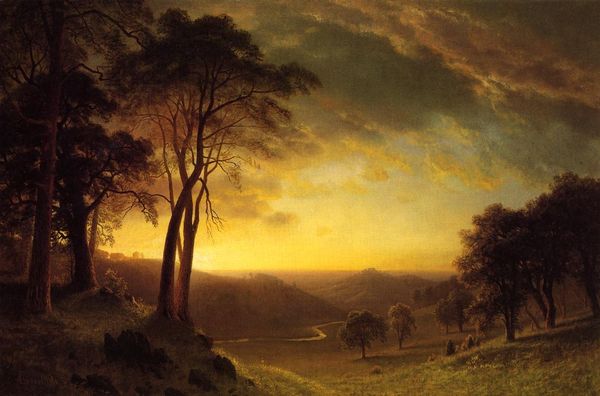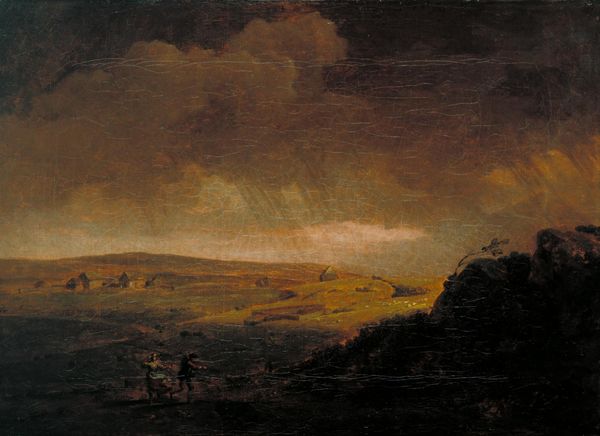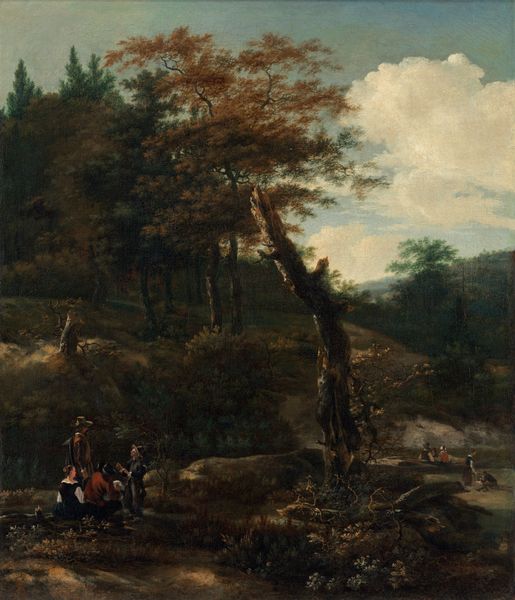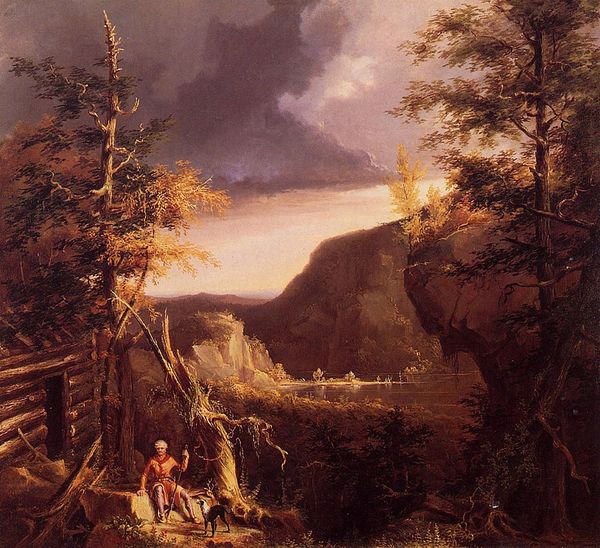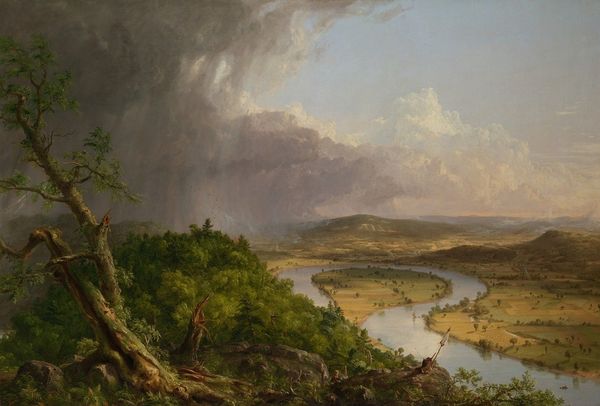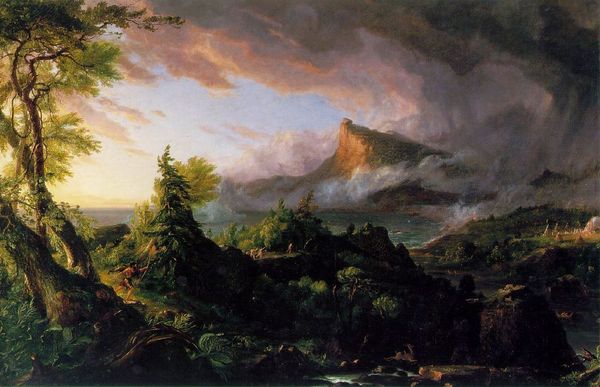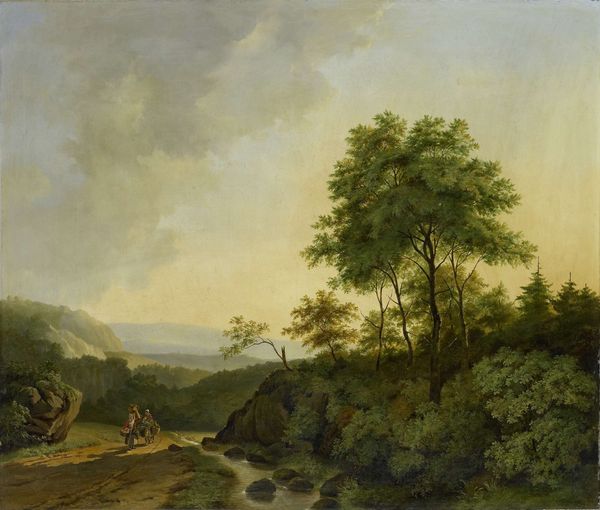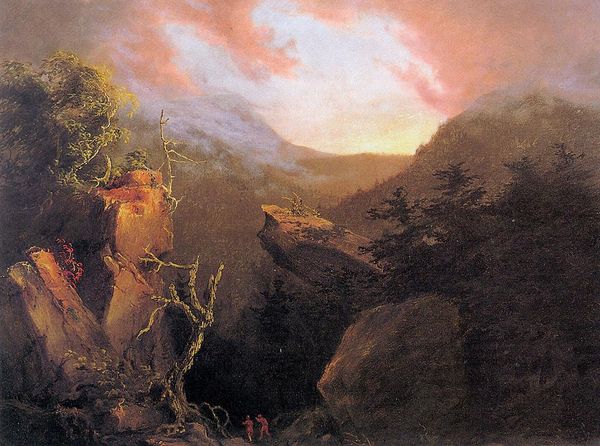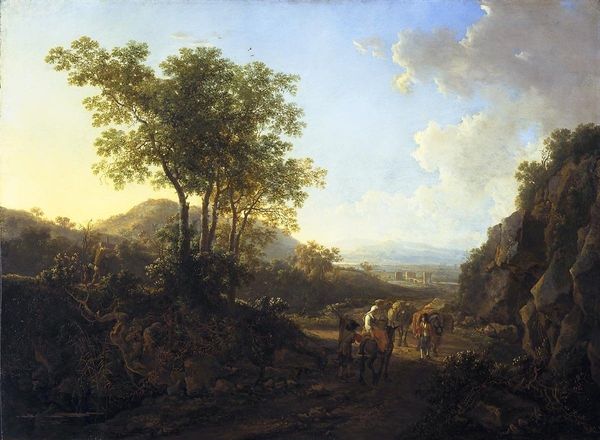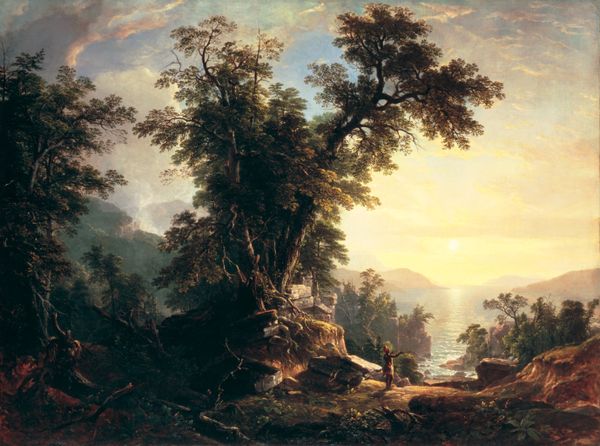
painting, oil-paint
#
tree
#
sky
#
painting
#
oil-paint
#
landscape
#
waterfall
#
river
#
oil painting
#
forest
#
underpainting
#
romanticism
#
cloud
#
hudson-river-school
#
water
#
cityscape
#
nature
Copyright: Public domain
Editor: This is "View on the Schoharie" painted by Thomas Cole in 1826, an oil painting that has a lovely balance of light and dark. What do you see in this piece beyond just a landscape? Curator: I see a loaded statement about the American project at a crucial point in its development. Cole isn’t just painting a pretty picture; he’s showing us the tension between untamed wilderness and encroaching civilization, and inviting us to consider its implications for the future. Notice the almost theatrical framing of the "wild" landscape with the darkened foreground and gnarled tree. What's being framed and for whom? Editor: It's interesting you use the word "theatrical." Now that you mention it, there almost seems to be a stage, with that figure standing there observing. Do you think Cole is saying that this so-called “untamed” wilderness is being viewed through a biased, even colonial, gaze? Curator: Absolutely. The positioning of the viewer, represented by that figure, is key. They're standing at a precipice, symbolically on the edge of the known and unknown, gazing upon land ripe for resource extraction. But more importantly, it signifies the artist’s and by extension the viewer’s participation in a drama of dispossession and transformation. Consider whose perspectives are silenced in these romantic portrayals. Who is absent? Whose labor and displacement are being made invisible for this romantic vision of landscape to exist? Editor: It's kind of unsettling how the beauty masks something so complex. Curator: It's meant to be. Cole, like many artists of his time, was grappling with complicated themes of progress, ownership, and national identity. By inviting us to analyze the scene, to see beyond its immediate beauty, we start questioning the narratives of that era, and the enduring legacies of land ownership in our own. Editor: I see it now. Thank you for making me look beyond the surface and think about the story behind it.
Comments
No comments
Be the first to comment and join the conversation on the ultimate creative platform.
